There’s a certain timelessness to be found in the Aude. This department in Languedoc-Roussillon in the southwest of France, hidden in the peaks and valleys of the Pyrenees, seems almost caught between eras: the puttering Deux Cheveaux – affectionately called dodoches by the locals – could place us in the 1960s, but the mountains themselves could be out of any time… and are.
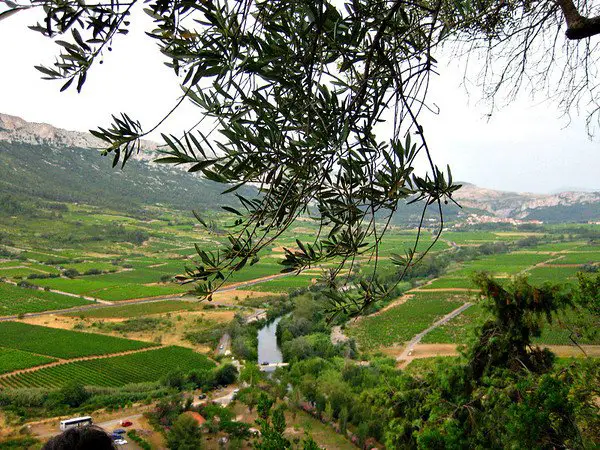
Tautavel is hidden amongst these mountains, near a cave – the Caune de l’Arago – where the remains of the first prehistoric European man were found. Around this archeological site, an industry of museums and history has developed, and it is there that, alongside the children of the nearby camp where I work as a counselor and language teacher, my journey into the past begins.
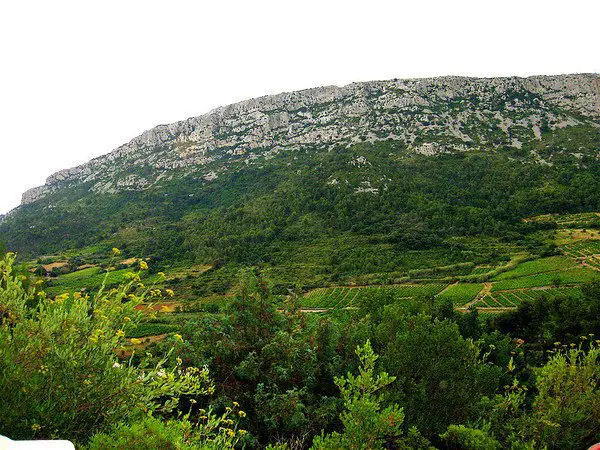
In the village of Tautavel itself – a typical regional village with its cafés and boulangeries and tiny épicerie supermarkets – the first of two prehistoric museums lies, next to a nearly anachronistic parking lot. Beginning the tour, we walk past a variety of dioramas, which have been installed with videos that play to make it look as though the characters are truly interacting with the models of prehistoric life.
The little boys are enthralled by the stone tools, found in the Caune, whereas the girls love looking at the little hut made of sticks: the prehistoric home. It makes the house where we live with the campers, a converted winemaker’s home that’s filled with much more rustic charm than these city kids have ever seen, seem like a veritable palace.
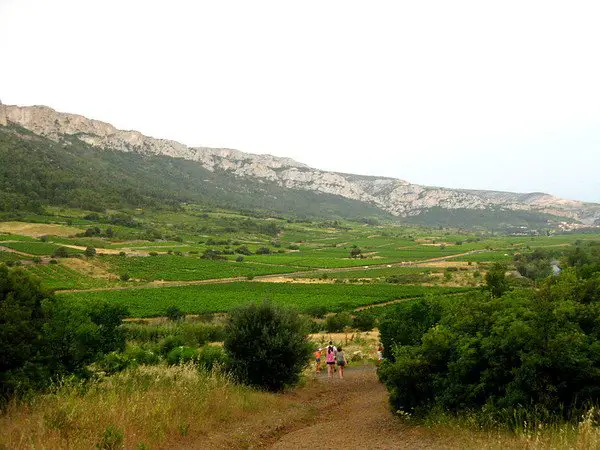
But this museum is far from the most interesting part of the journey. As we traipse uphill to the second museum, the expanse of the Pyrenees is visible all around us. I’ve been here before, and yet I never cease to be amazed, not only by the beauty of the region but by the typically European landscapes that, I know by now, were once inhabited by animals one would more readily associate with African plains.
Sure enough, once we enter the museum and begin to explore the bone remains and models of rhinoceros, lions and elephants, the children look at us as though we might be pulling their legs.
But it’s plain to see: there’s no joking involved. This landscape, now filled with nothing more exotic than a few sanglier – the wild boar that we tease we hear coming through the vines when out for evening strolls – was once home to lions and even mammoths. I love watching the look of understanding on their faces when they finally grasp the concept: where we have not always been what we see.
At the end of our journey through the museum is the man himself: Tautavel man, reconstructed in a glass box to be observed and examined.
Behind him, a telescope lets us see the cave where he was found, the cave where he lived all those years ago, building fires, cooking his food, raising his family.
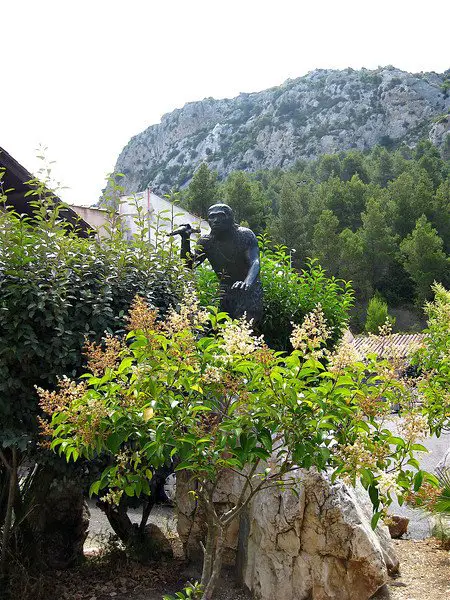
When the tour is over, the children are treated to demonstrations: They learn to make a fire of their own, to throw spears the way that Tautavel man did to kill his prey. I watch and laugh with the others at successful and less successful attempts, but my mind strays. I look out over the mountains, dotted with green and orange — trees and earth. I’ve seen from the artistic representations of this landscape that it didn’t always look quite like this, but the similarities are remarkable. Here, without a house or man-made road in sight, it’s almost as though none of this ever happened, as though Tautavel man could break free of his glass cage, climb up to his cave, and look out over the landscape that was once his… and still is.
All photos property of and by the author.
Pin for Later
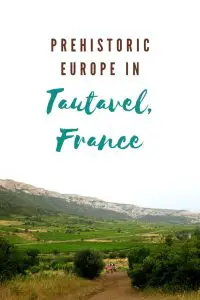
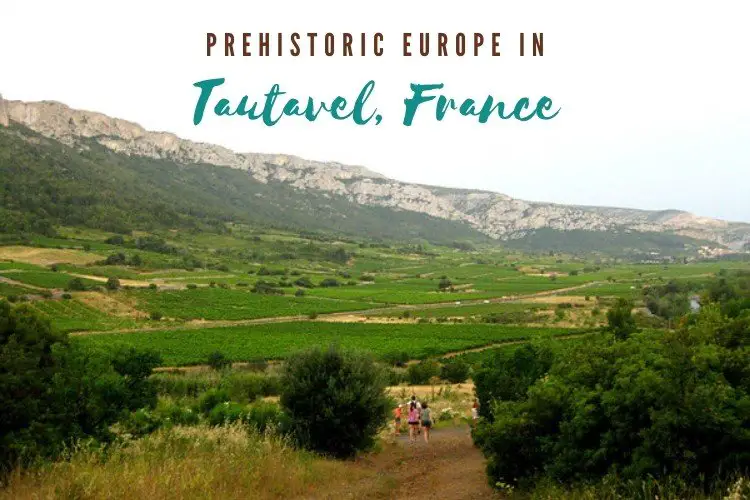
What a brilliant museum! 🙂 I’m so fascinated by history like this, history that catches me by surprise and takes me places I’d never have imagined in my wildest dreams. 🙂 Thanks so much for taking us there today. 🙂
Interesting. We have poked around the Dordogne region and visited the Peche Merle cave. The handprint of an ancient painter was so moving it brought tears. I just wrote about the Iceman – a mummy found in northern Italy; not a cave man but still over 5000 years old. (http://aLittleLightExercise.blogspot.com).
Thanks for this article which takes me ever further back in time.